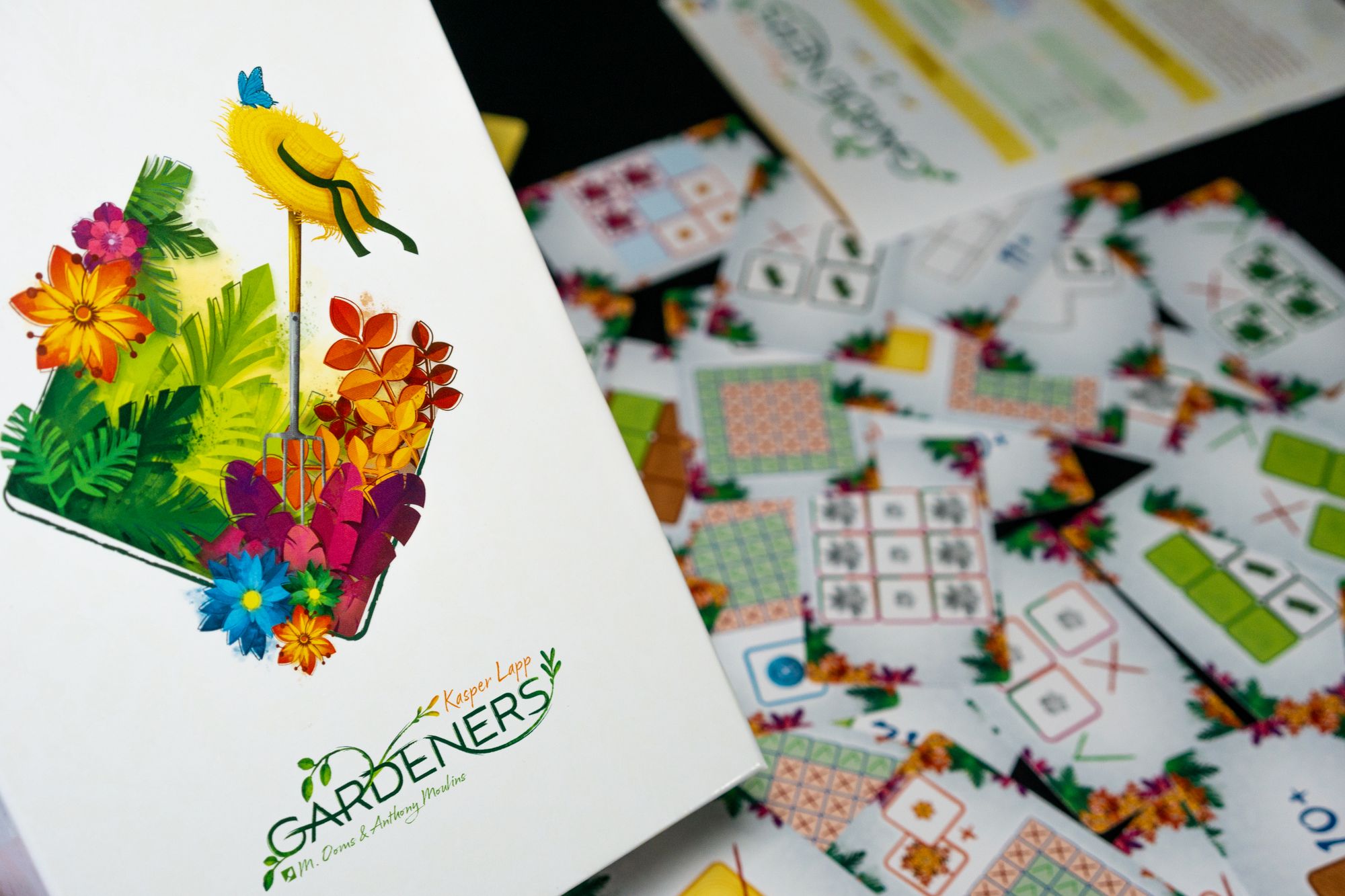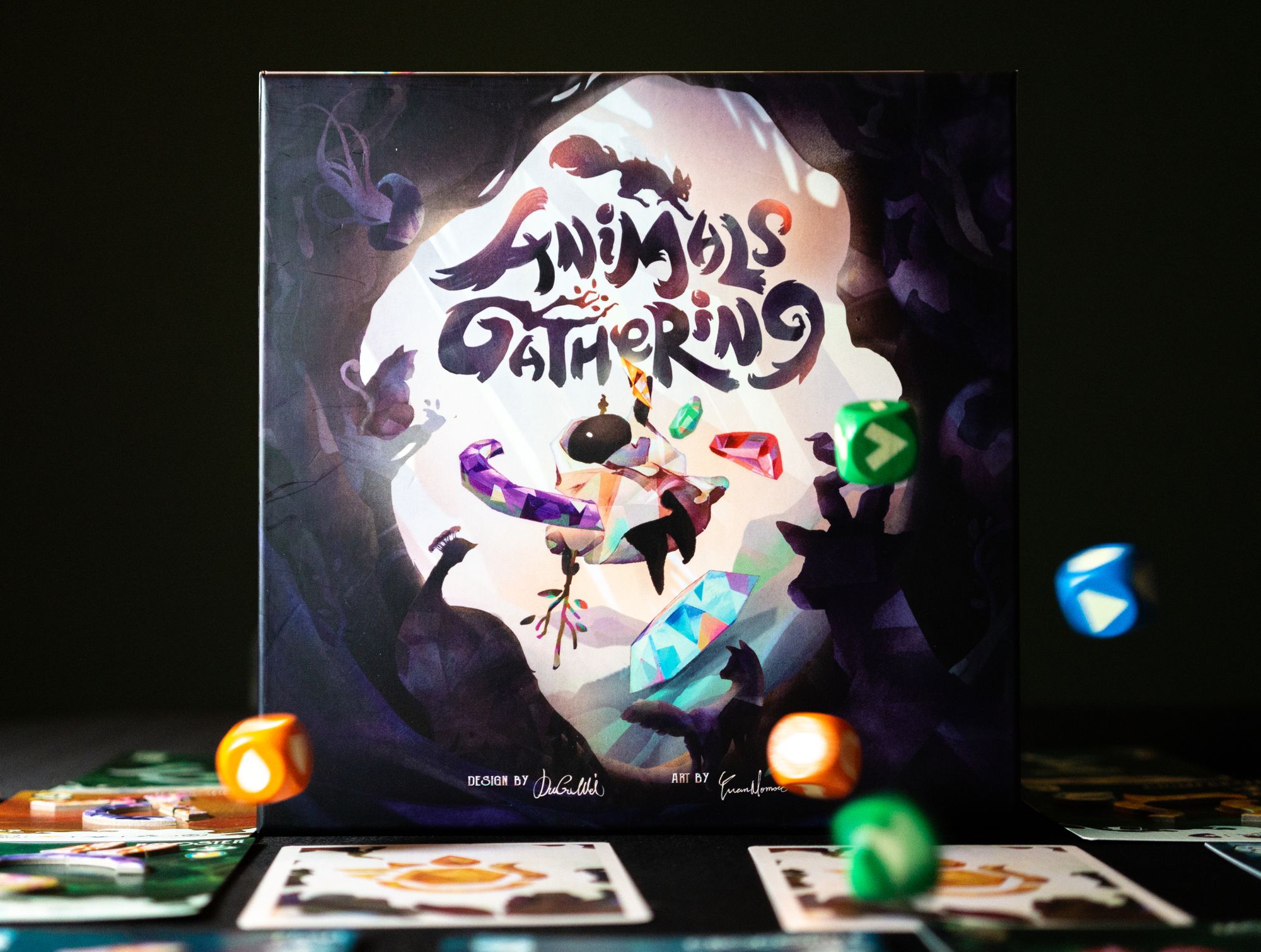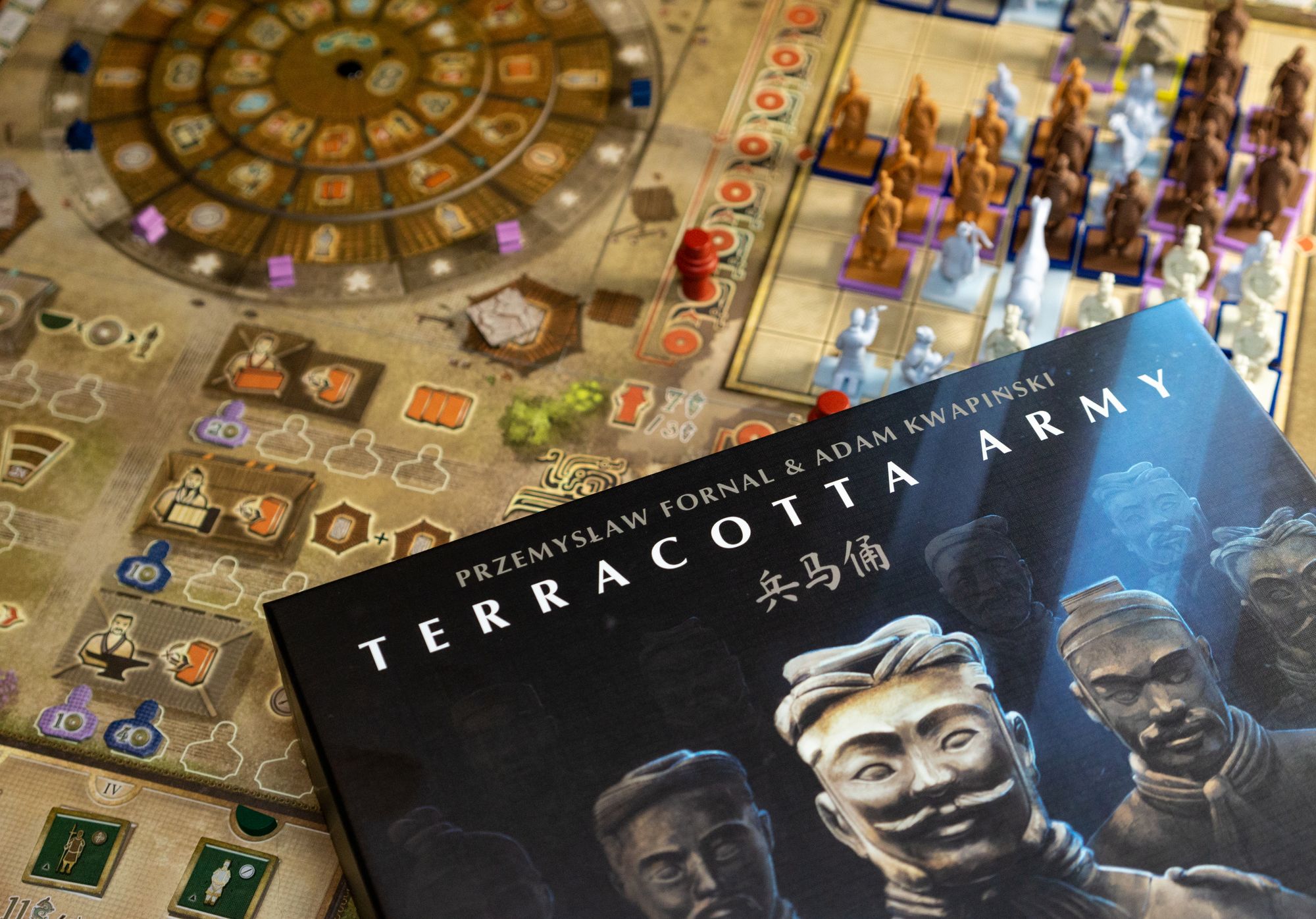Review: Yin Yang
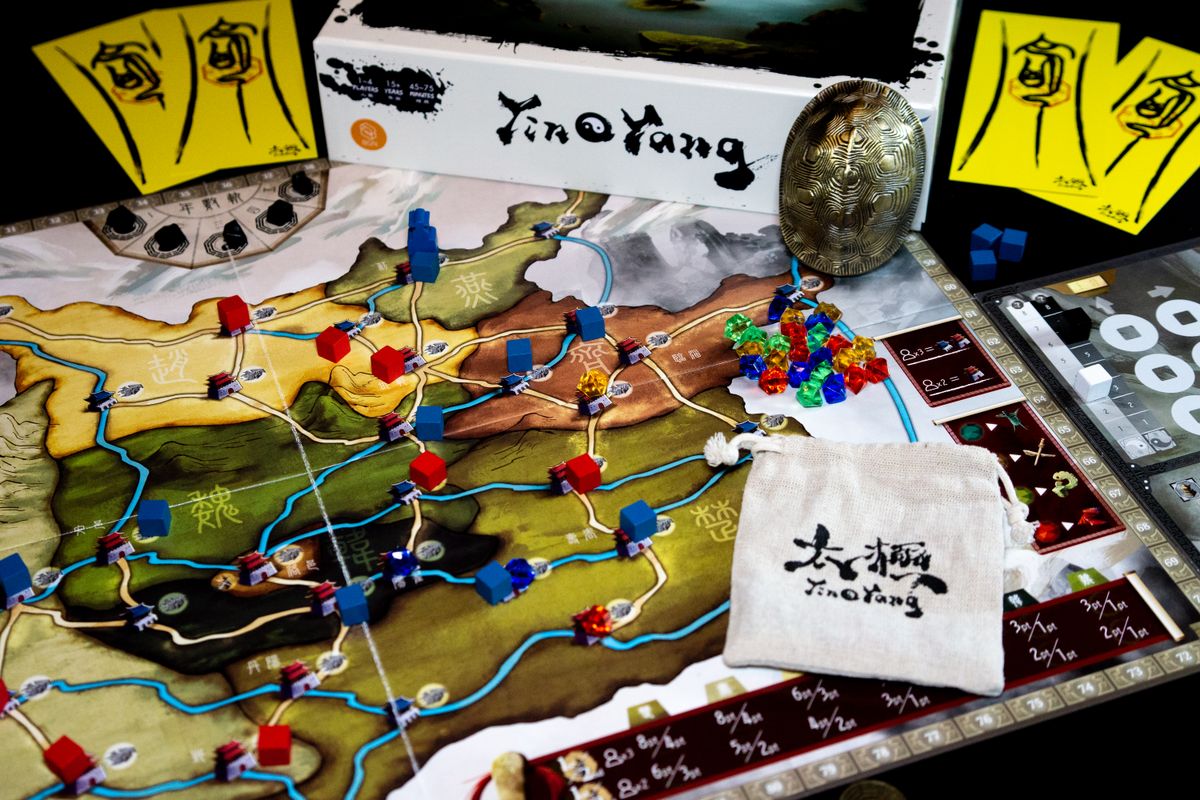
Spread influence in ancient China, mindful of the will of the gods.
Designed by DuGuWei and published by BGNations
👤 1-4 players
🧩 Action Selection, Area Control
⚖️ Light-Medium
Overview
Yin and Yang is a concept of dualism in ancient Chinese philosophy, representing two opposite principles. Yin is feminine while Yang is masculine, and this concept is embodied in all things around the world, such as winter and summer, male and female, and light and dark.
Yin Yang takes players back to ancient China during the Warring State period before the common era. China was divided into seven kingdoms at the time, constantly fighting each other, and people were suffering. To pursue inner peace, every kind of fortune-telling method was then developed.
One of those fortune-telling methods involves taking a tortoiseshell with copper coins inside, then shaking it to have indications based on which coins emerge and how they fall. This method is precisely what Yin Yang is based on. Players act as Taoist priests, traveling on an ancient Chinese map to retrieve the local specialty of different cities to unlock their destiny. Additionally, players can also build temples in different cities to earn worship from seven kingdoms.
—description from the publisher
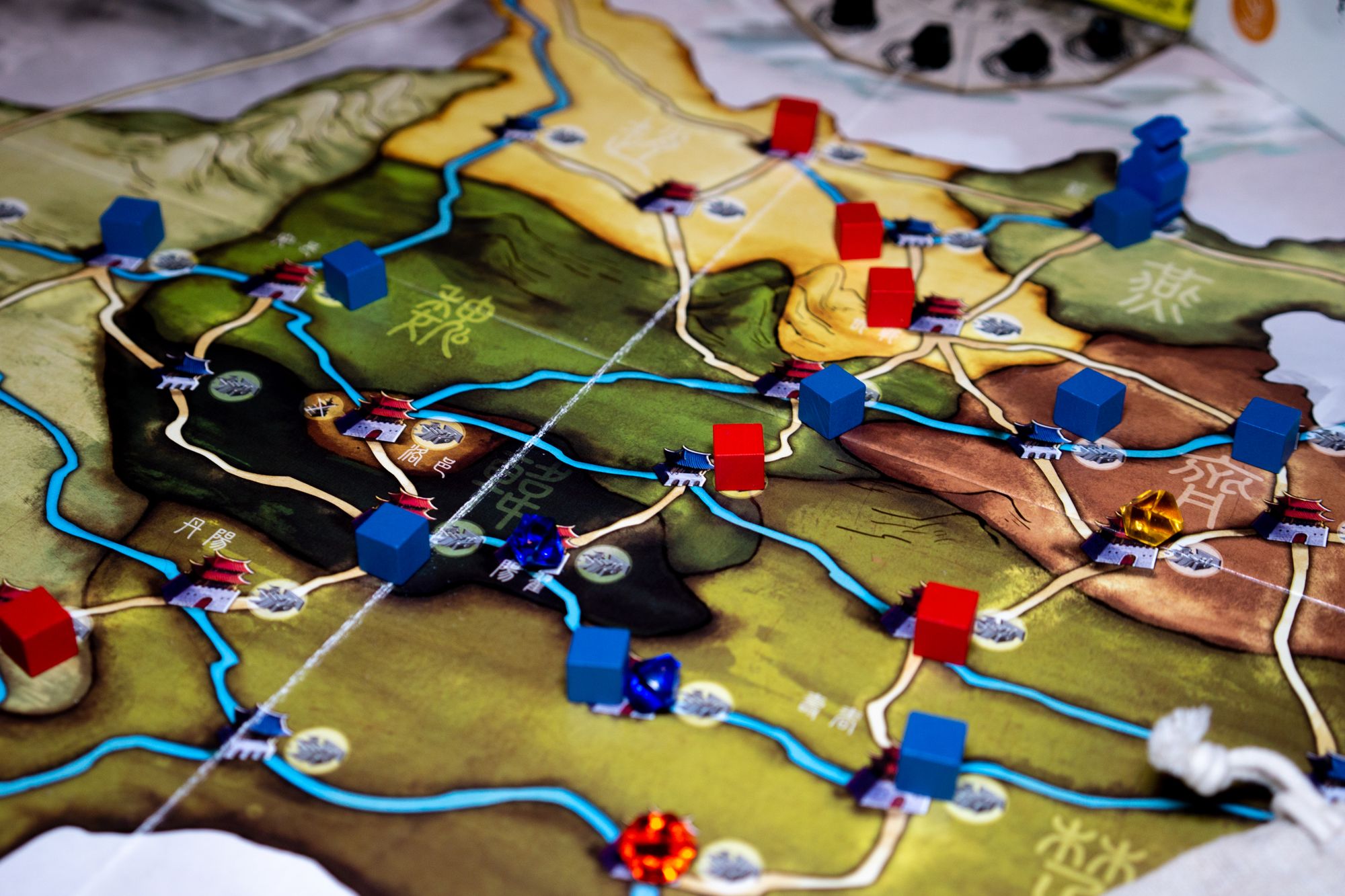
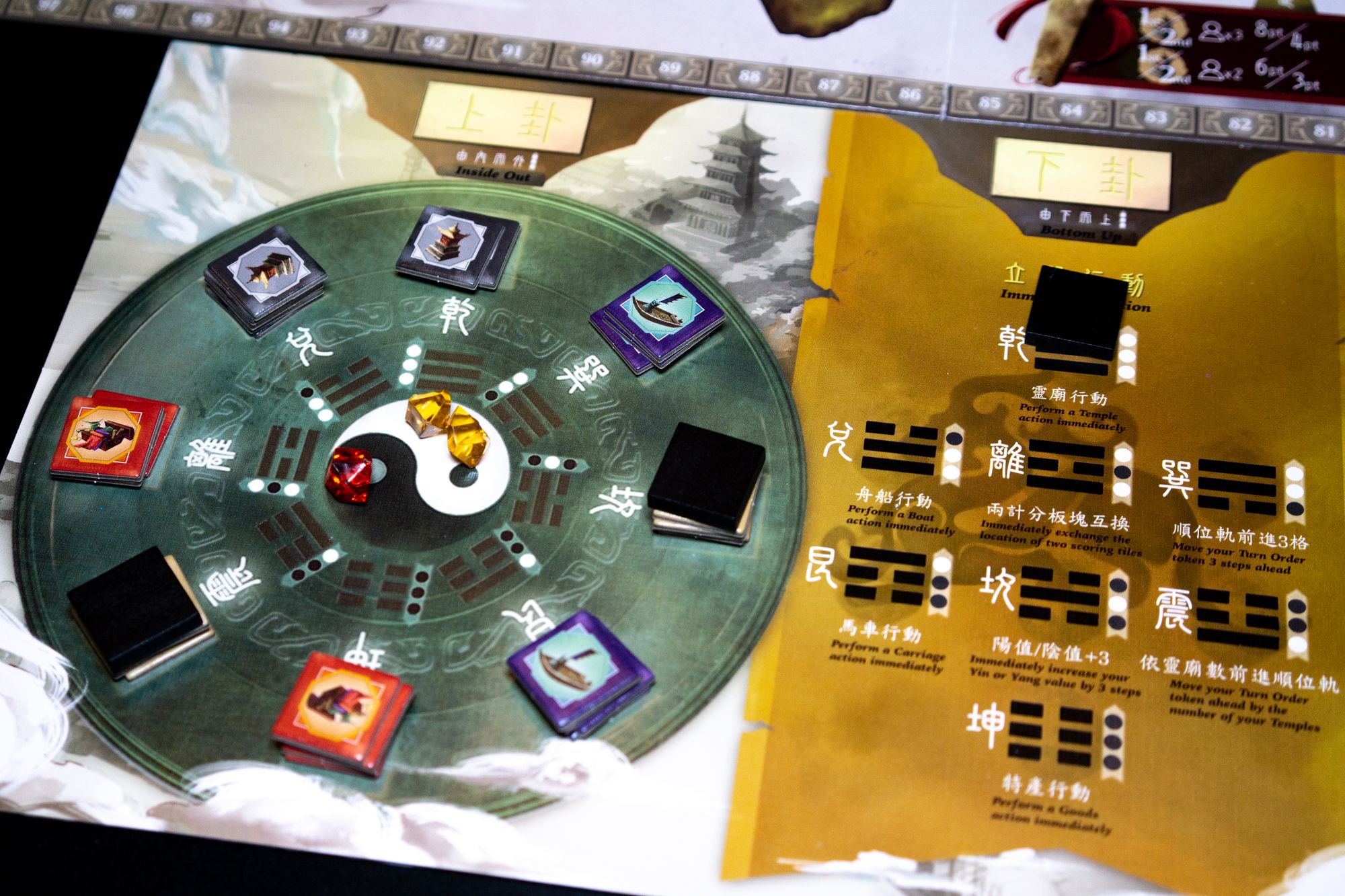
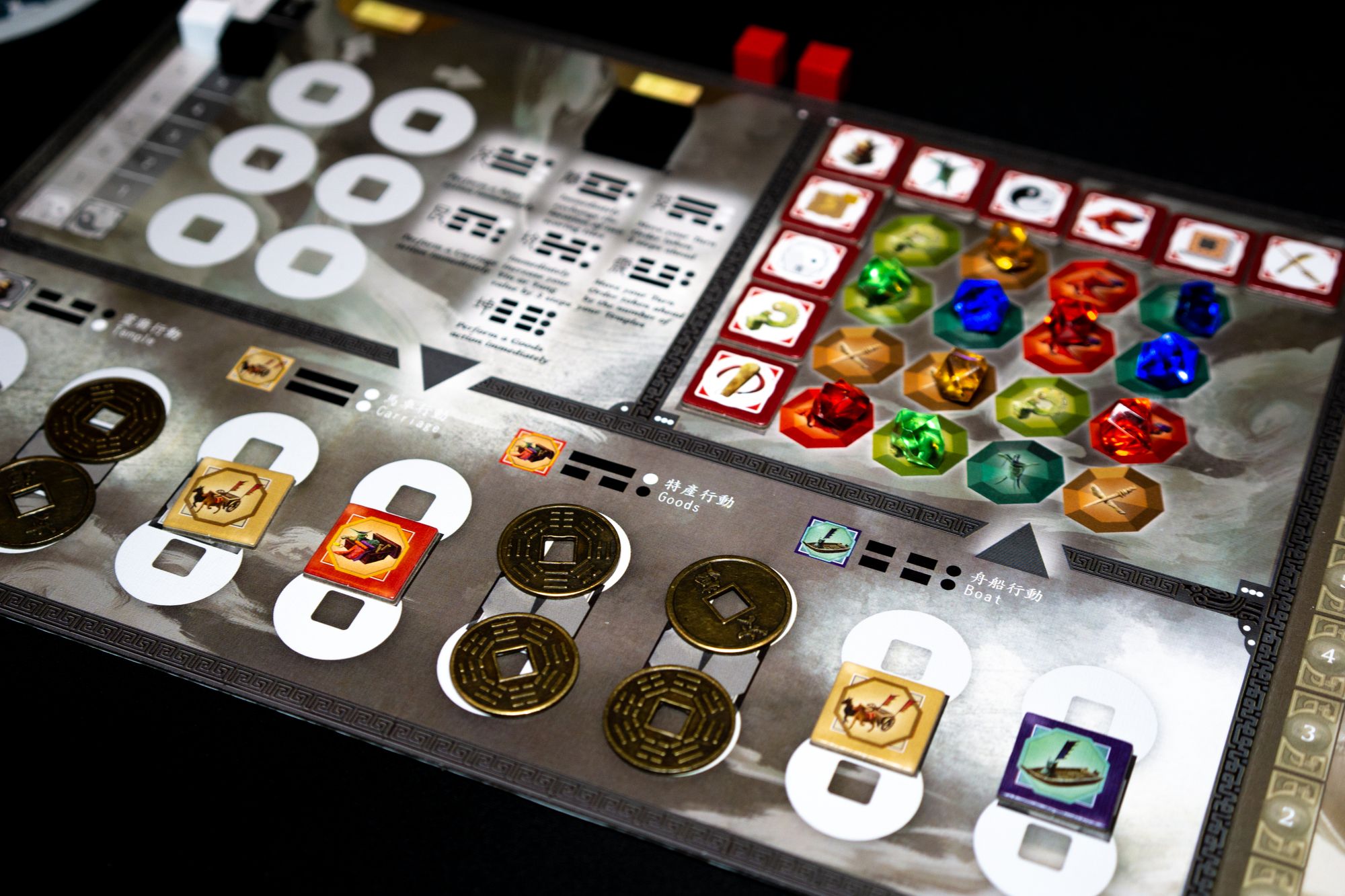
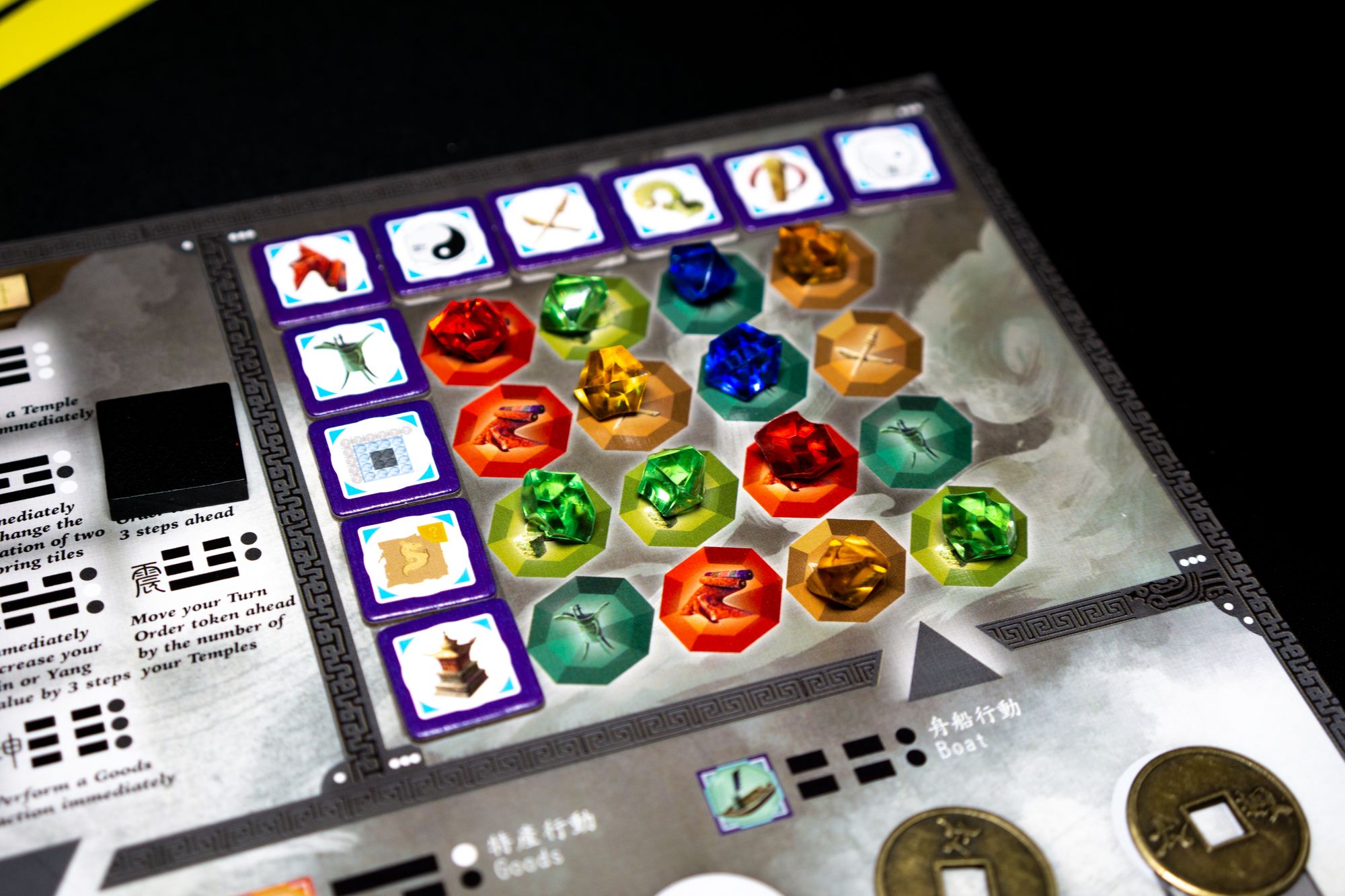
Gameplay
Yin Yang is played over five rounds in which players move around a central board using the four main actions: move over the road, move over water, collect a good, or build a temple. Each town can only have one temple. Goods come in four types, and at the end of your turn, you place them on a grid on your player board. If you complete a row, column, or diagonal line with gems, you gain the corresponding scoring ability for the end of the game. These scoring abilities include the number of temples, type of goods, turn order position and more.
You put six coins in a metal tortoiseshell each turn and shake them out, so they land on a random side. One side of the coin represents Yin (black), and the other represents Yang (white). You create two sets of three coins from these six coins to choose a pair of actions. With the first set, you can gain an action tile from the central market, and with the second set, you perform an immediate action as shown on your player board.
After selecting two of those actions, you move all your coins to the bottom section of your board. Along with the action tiles you've collected during the game, you can now arrange them to perform actions with your monk on the central board.
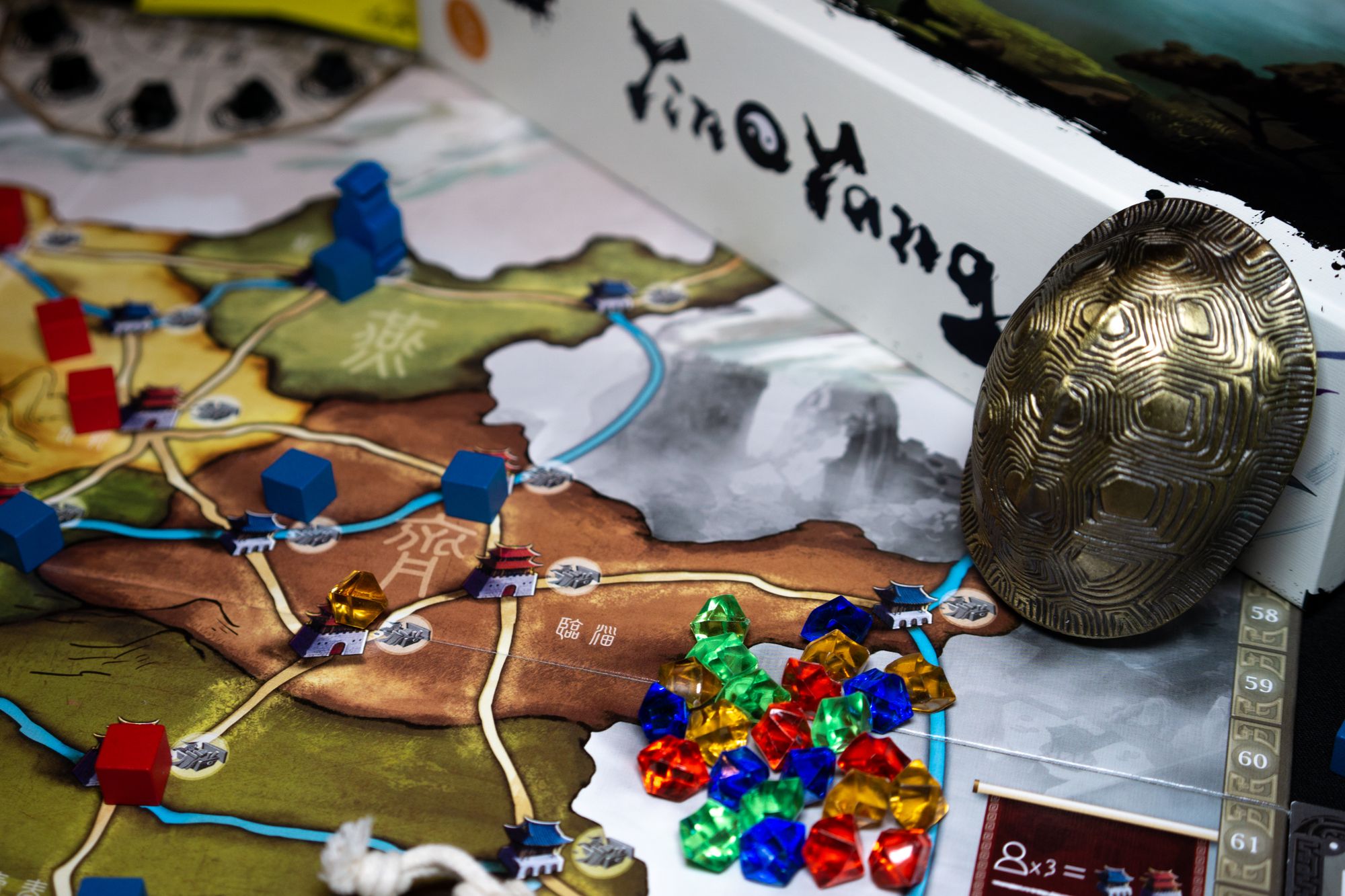
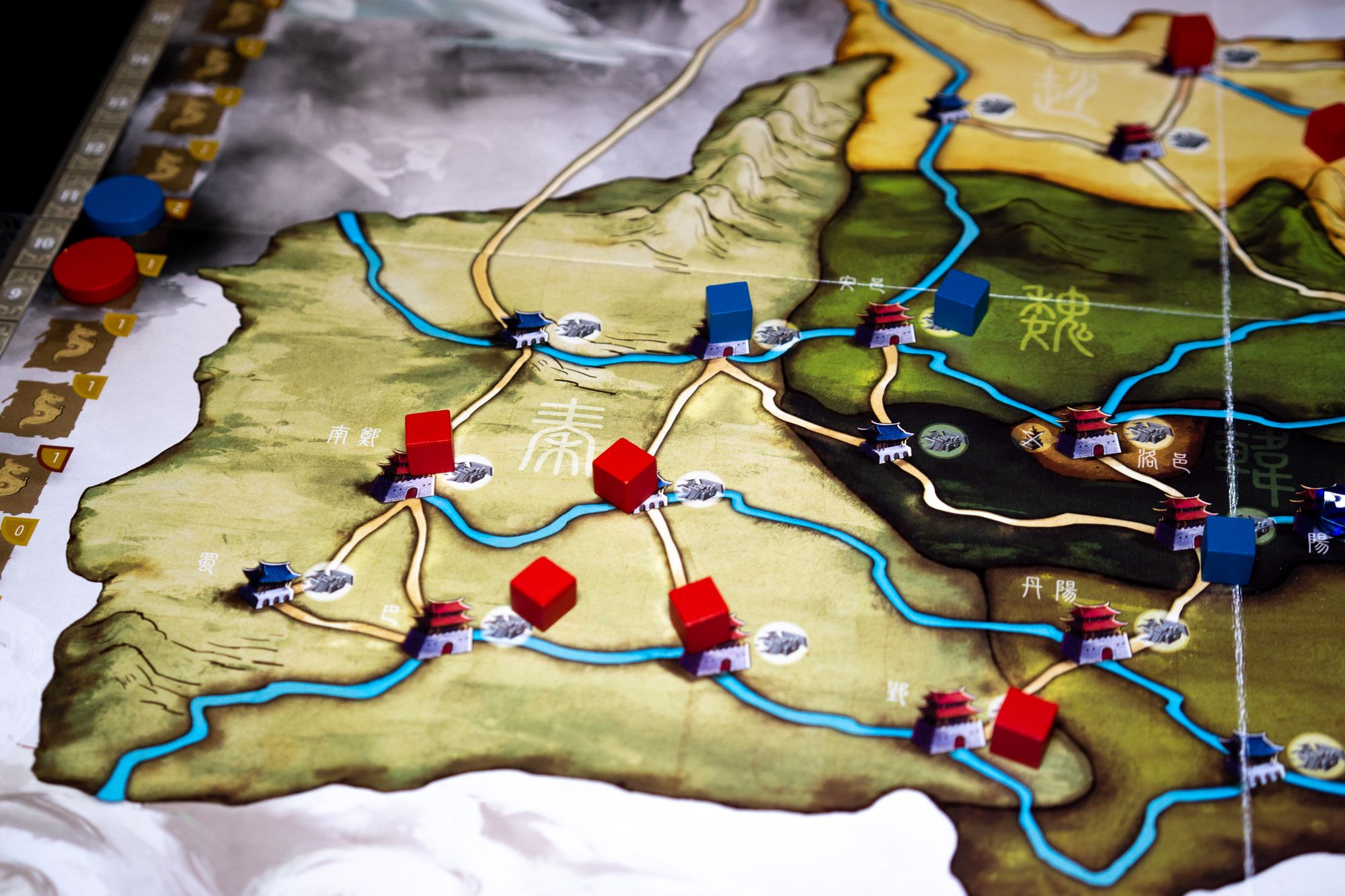
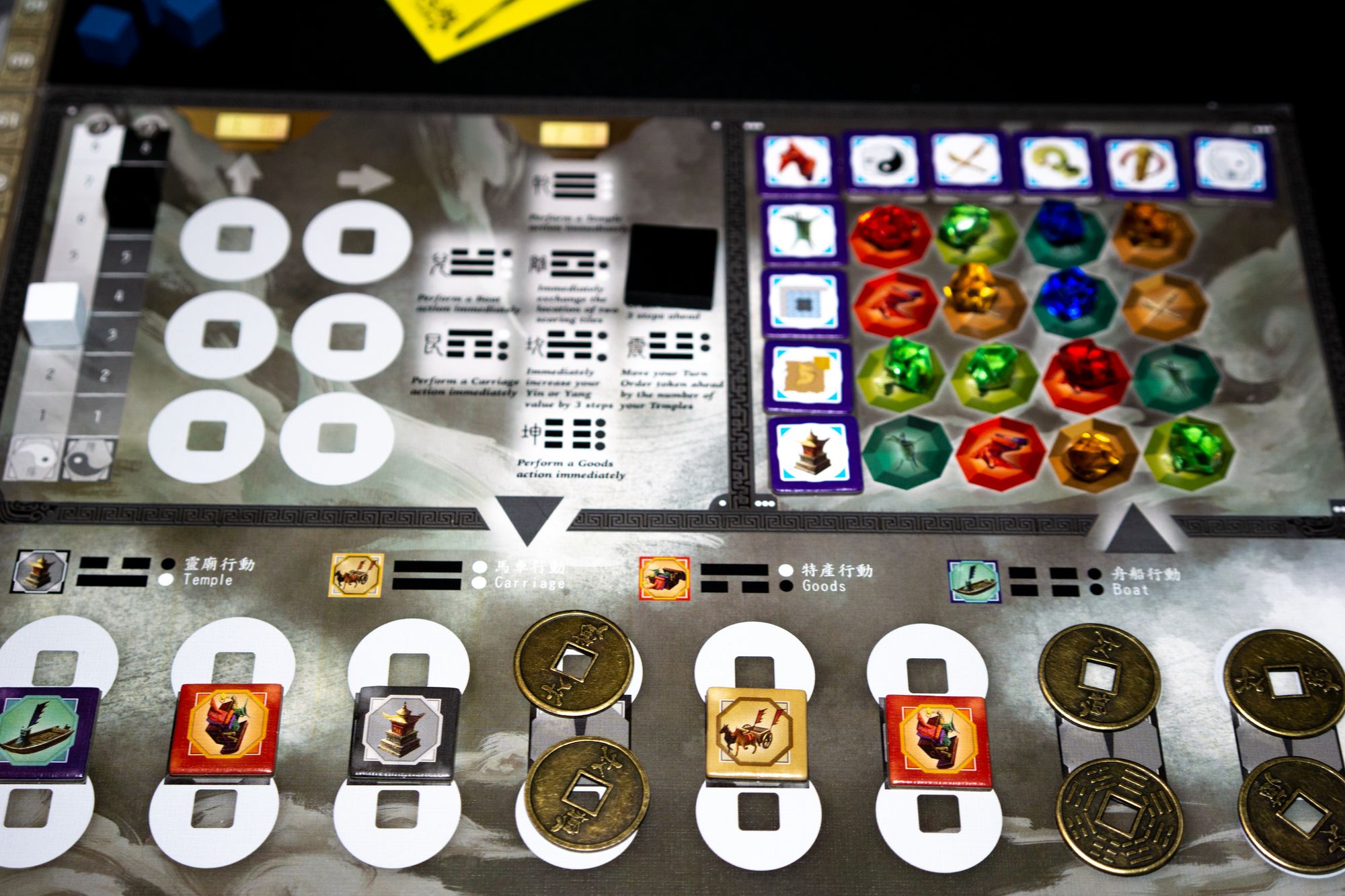
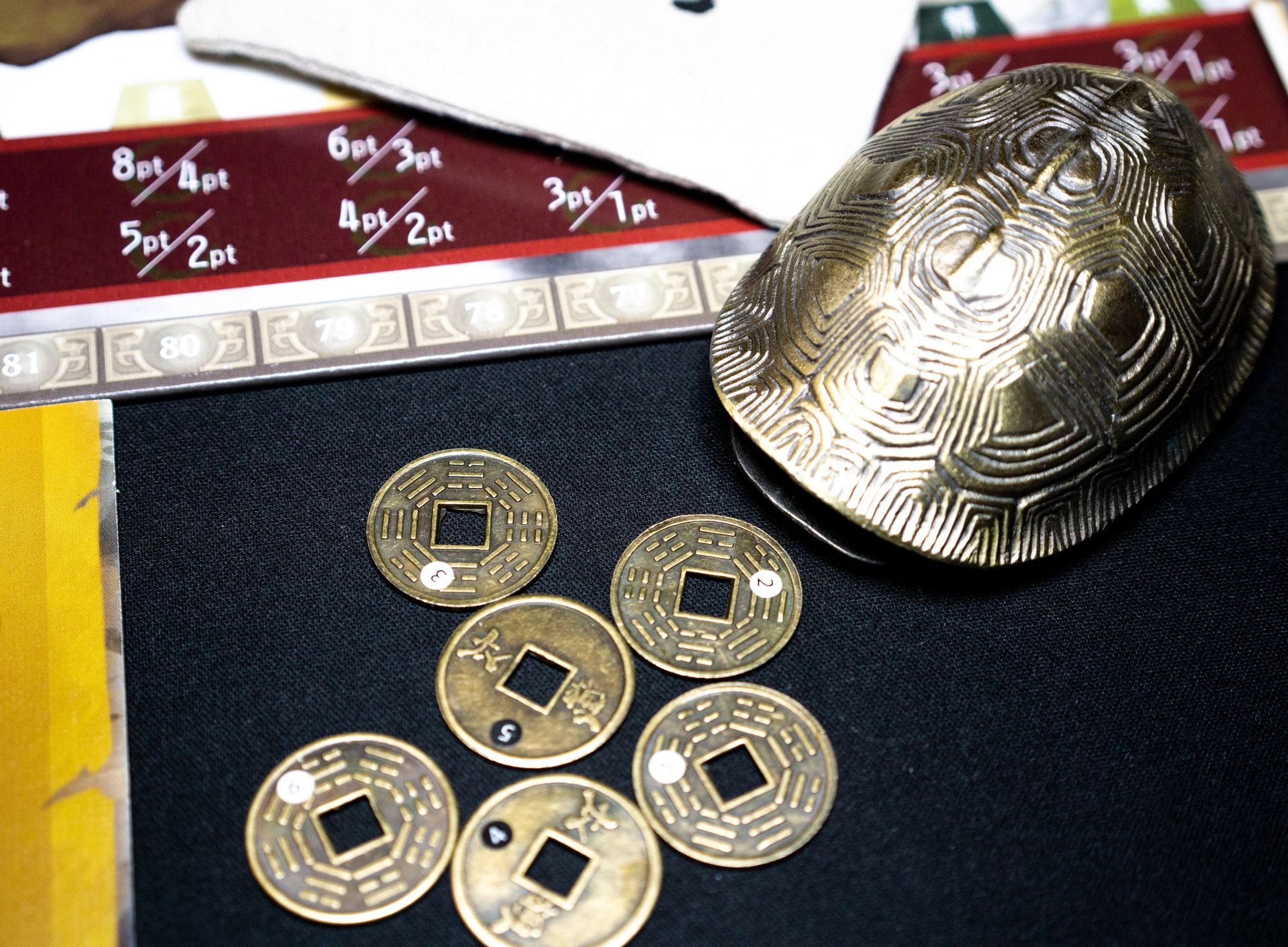
Thoughts
Yin Yang is another fine example of an Asian design that many players can enjoy. It features easy rules and a relatively short playing time; you could probably teach and play this game within 45 minutes, which is unique for a game of this scale.
The action selection of Yin Yang is one-of-a-kind as you put coins into a metal tortoiseshell and shake them out. You have to deal with how the coins land, as this involves a bit of luck; it wasn't too bad as you always had plenty of mitigation options. While this all feels unique, it could have been replaced by something else (cards or dice) and achieved the same mechanic, but it does fit the overall theme and atmosphere of the game. I think this made it a bit overly complex, but once you get the gist, you should have no problems with it.
The theme is very present in the game, and you can feel that the designer and publisher know plenty about it. I'm not very familiar with the depicted theme, but I'm sure plenty of thought went into it. The metal coins and tortoiseshell are a fun luxury addition.
Generally, there are two ways to collect points: building temples and collecting goods (gems). When building temples, you try to achieve the majority in the main board regions. Collecting goods is a bit more involved as you place them on a grid, and in that way, you unlock unique scoring possibilities you may score at the end of the game. Building your strategy using this grid and collecting action tiles that support that strategy is a fun and challenging balance.
After selecting the two main actions, you can arrange your coins and collected action tiles to perform actions on the main board. While I think this is cleverly done, it does feel like you can't make many decisions here, as there is almost always only one optimal arrangement (or none in the worst case). This limits your decision space and feels almost like you're just changing things on the map without too much thought.
Given the short playing time, Yin Yang plays well at most player counts but shines at three or four players as it lacks a bit of tension at two players. I like the effort of adding a separate two/three-player board side to the game.
👍 Easy rules and fast playing time
👍 Unique action selection system
👍 Balance different scoring opportunities
👍 Metal components and gems feel great
➖ Action Selection is a bit complex for what it is
➖ Not much decision space
➖ Misses a bit of tension at two players
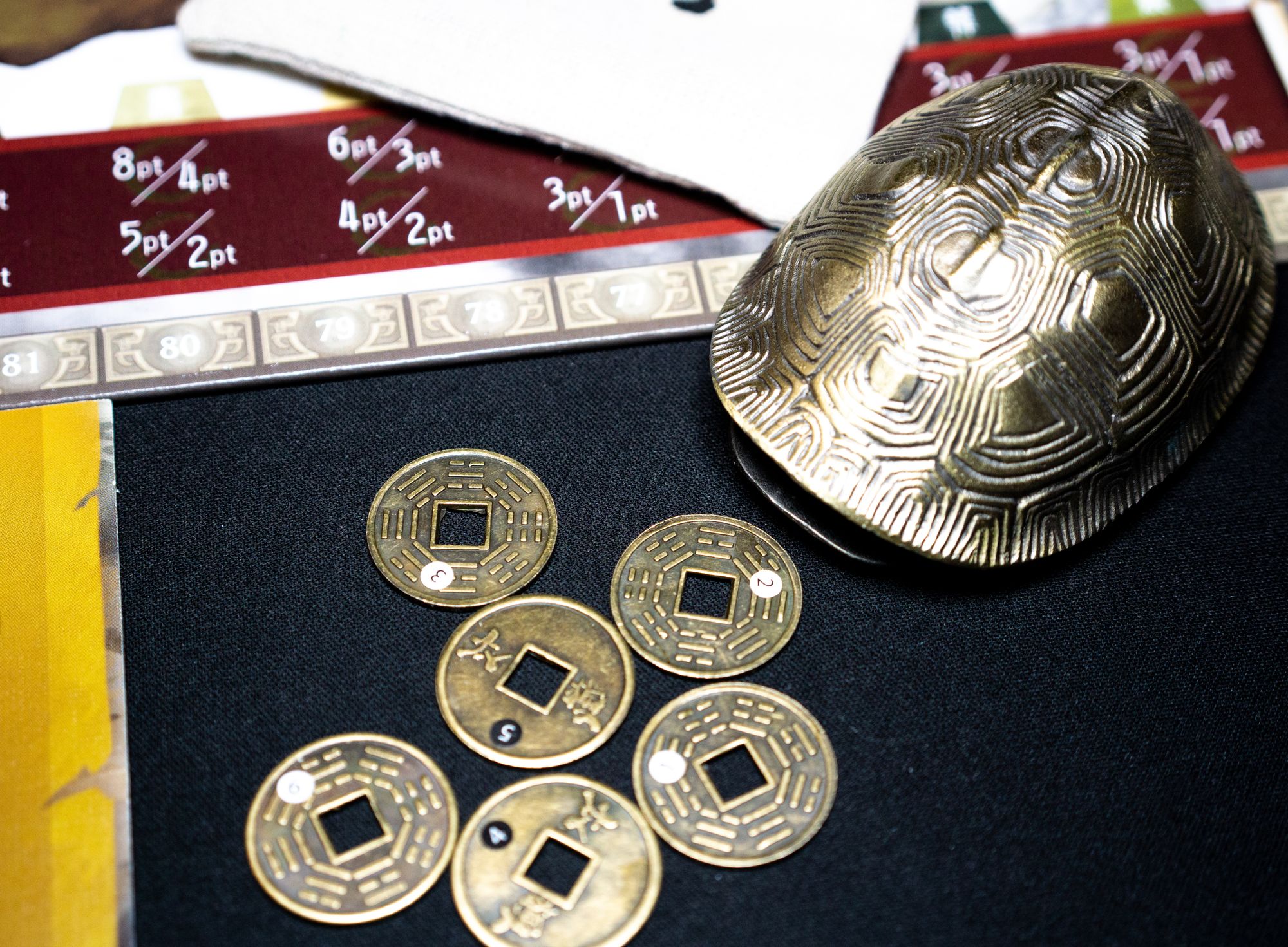
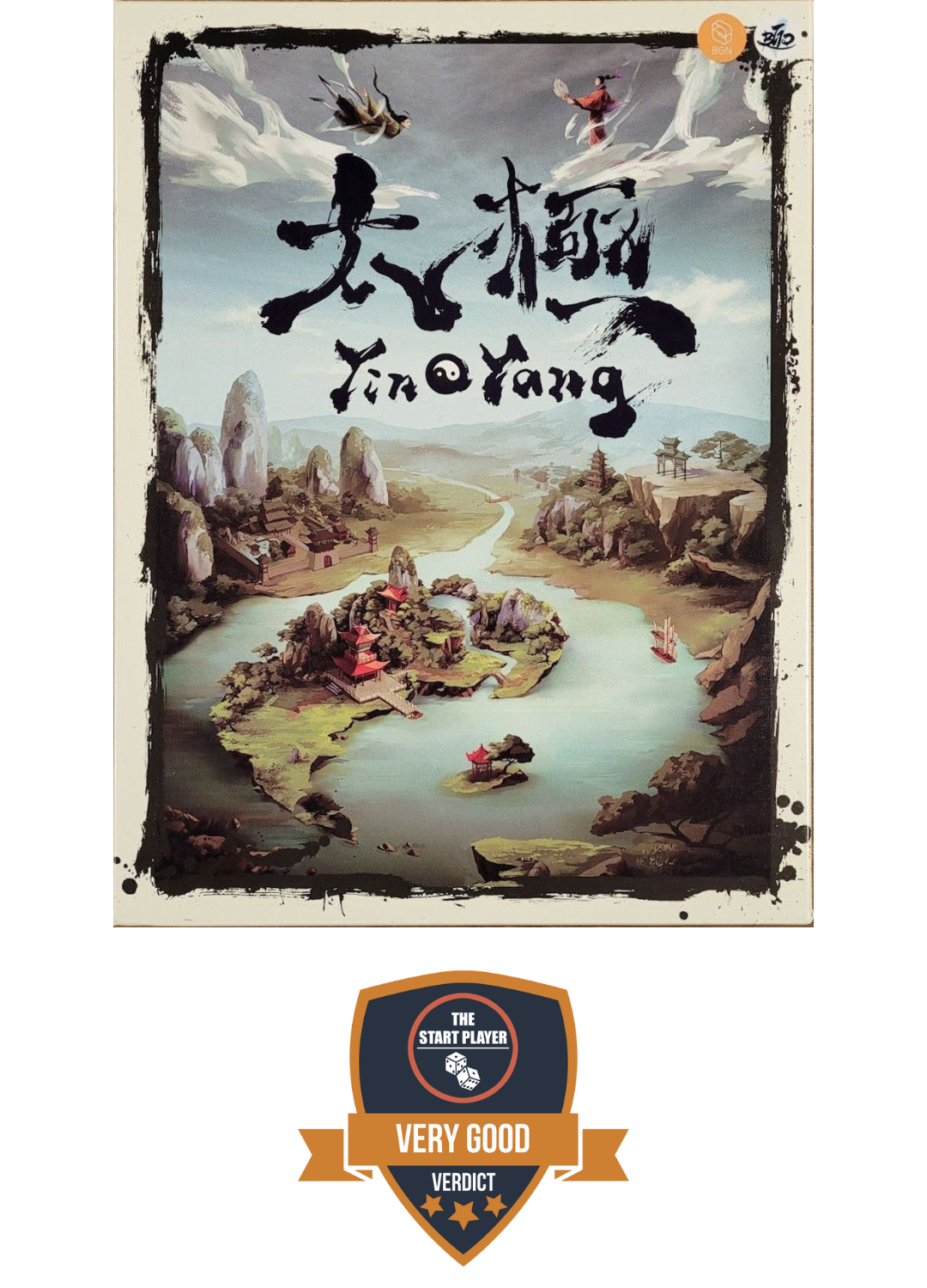
Yin Yang is another unique design from designer DuGuWei where you use a tortoiseshell and metal coins to select actions. This action selection is implemented cleverly and neatly integrated into this well-designed game. The action selection feels a bit overly complex, and the decision space is not always that interesting, but overall it's a well-thought-out game with a theme you don't see every day.
